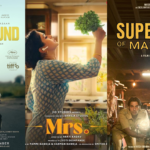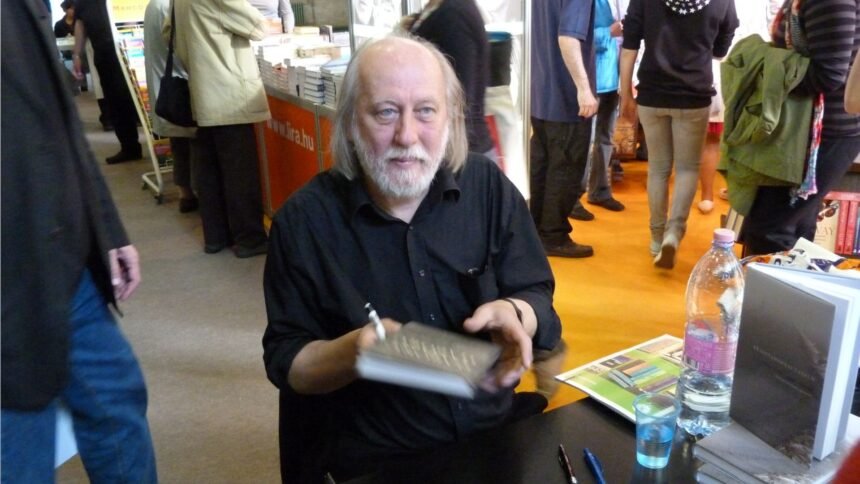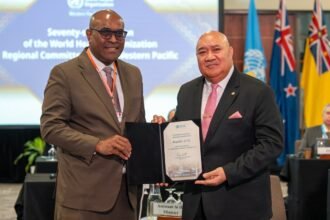Stockholm: The Nobel Prize in Literature 2025 has been awarded to Hungarian novelist László Krasznahorkai, recognised by the Swedish Academy for his “majestic visionary prose that transforms despair into beauty and chaos into art.” Often hailed as “the master of apocalypse” by American critic Susan Sontag, Krasznahorkai is celebrated for his monumental works that explore the boundaries between civilisation and collapse silence and resistance and the fragile moral consciousness of humankind.
From Rural Hungary to the World Stage
Born in Gyula, Hungary in 1954 Krasznahorkai emerged as a literary phenomenon with his debut novel Sátántangó (Satantango, 1985) a haunting portrayal of a decaying collective farm in post-communist Hungary. The novel’s bleak atmosphere and hypnotic style captured the desolation of an entire era. Its 1994 film adaptation by Béla Tarr became a modern classic of world cinema running more than seven hours and establishing both author and director as pioneers of slow, meditative storytelling.
His subsequent novel The Melancholy of Resistance (1989) deepened his apocalyptic vision. Set in a provincial town visited by a mysterious circus carrying the carcass of a whale, the story depicts society’s descent into hysteria and violence. This work earned him global recognition and confirmed his status as one of Europe’s most original voices.
A Voice Between East and West
Krasznahorkai’s later novels expanded beyond Hungary’s borders while retaining his distinctive style of long meandering sentences that seem to defy conventional punctuation. His novel War and War (1999) follows a lonely archivist who travels from Budapest to New York to preserve an ancient manuscript merging mysticism with existential despair.
In Baron Wenckheim’s Homecoming (2016), considered his crowning masterpiece the author returned to the Hungarian setting with a tragicomic vision of redemption and folly. The book’s intricate prose and human depth earned him the National Book Award for Translated Literature in 2019.
Krasznahorkai’s more recent novel Herscht 07769 (2021) shifts to contemporary Germany, blending social unrest with the spiritual legacy of Johann Sebastian Bach. Critics hailed it as “a symphony of despair and transcendence.” Across his oeuvre he continuously examines how individuals face chaos whether through madness art or faith.
Eastern Aesthetics and the Search for Beauty
Beyond his apocalyptic sagas, Krasznahorkai also wrote meditative works inspired by his travels in China and Japan. His lyrical novel A Mountain to the North a Lake to the South, Paths to the West, a River to the East (2003) and his celebrated short story collection Seiobo There Below (2008) reveal his fascination with Buddhist stillness and artistic transcendence.
In Seiobo There Below arranged according to the Fibonacci sequence seventeen stories explore art and beauty through episodes ranging from Renaissance painting to Noh theatre an attempt to understand artistic creation as a sacred act.
A Legacy Bridging Literature and Cinema
Krasznahorkai’s collaborations with director Béla Tarr — including Damnation (1988), Satantango (1994), Werckmeister Harmonies (2000) and The Turin Horse (2011) — are milestones in cinematic history, characterised by long takes, minimalism, and moral intensity. Together they forged a new form of visual and philosophical narrative that influenced generations of filmmakers and writers.
A Master of the Modern Epic
Chair of the Nobel Committee Anders Olsson described Krasznahorkai as “a great epic writer in the Central European tradition that stretches from Kafka to Bernhard” noting his unique fusion of absurdism, grotesque humour and spiritual introspection.
The Academy’s statement highlights that Krasznahorkai’s prose “turns hopelessness into rhythm and chaos into architecture” reflecting a relentless quest for moral truth in a disintegrating world.
About the Author
Name: László Krasznahorkai
Born: 1954, Gyula, Hungary
Language: Hungarian
Notable Works: Satantango, The Melancholy of Resistance, War and War, Baron Wenckheim’s Homecoming, Seiobo There Below
Style: Long, fluid sentences with apocalyptic and metaphysical themes
Major Awards: National Book Award (2019), Man Booker International Prize (2015), Nobel Prize in Literature (2025)















